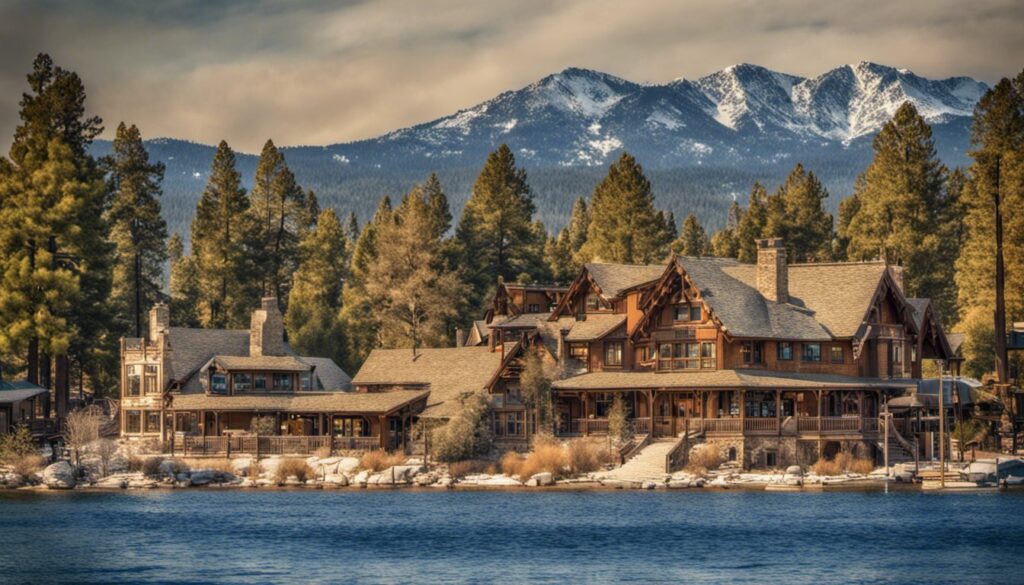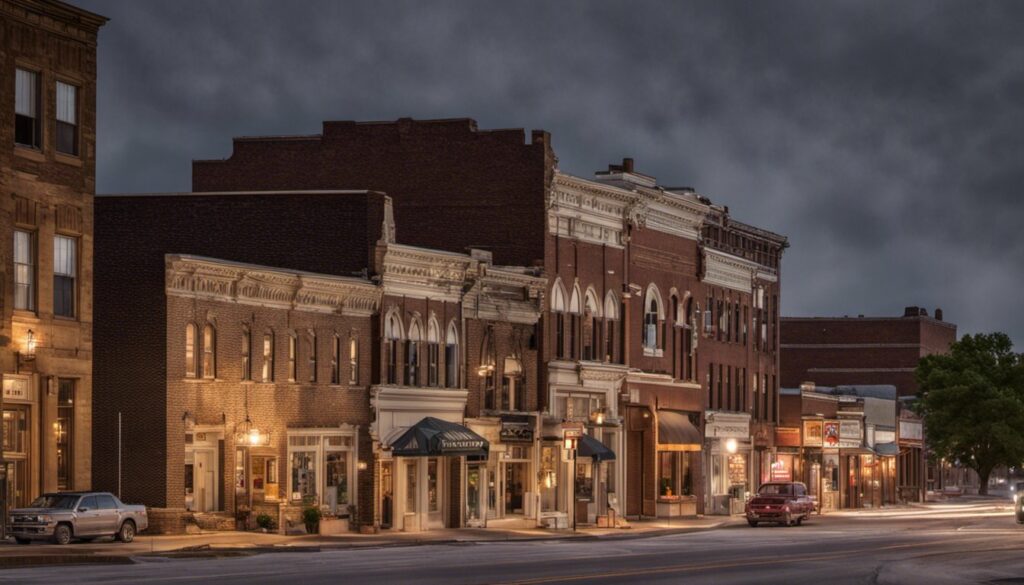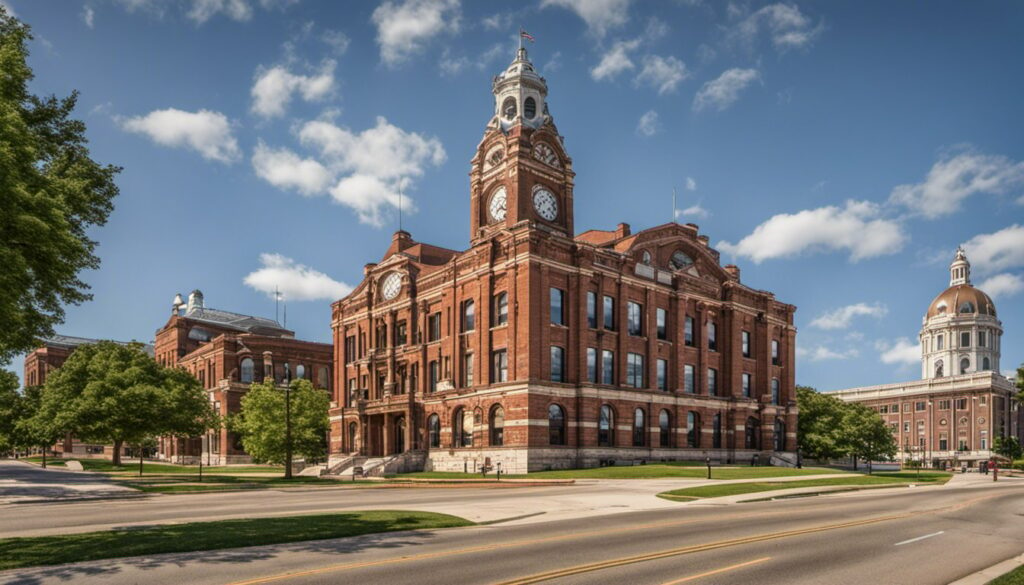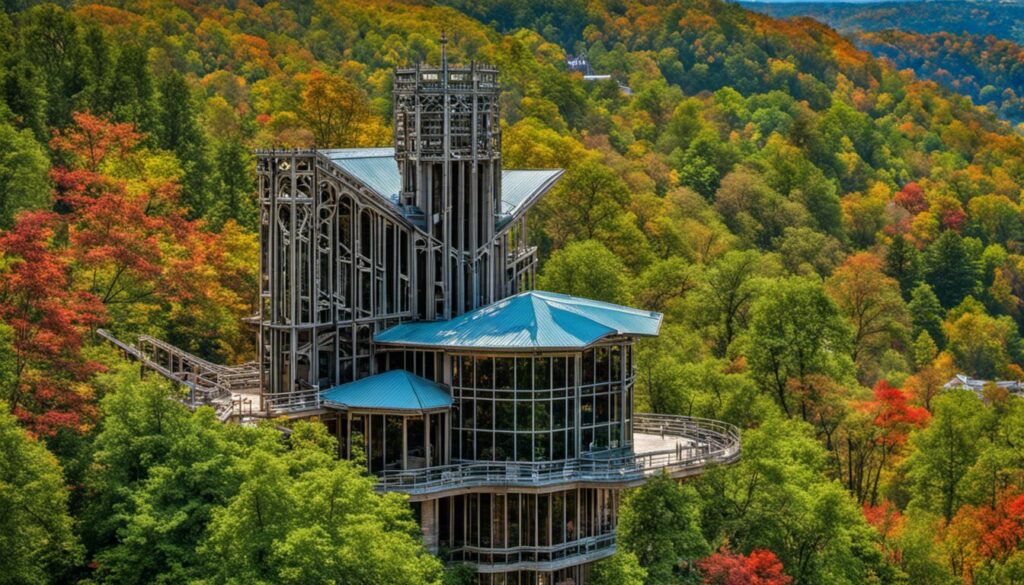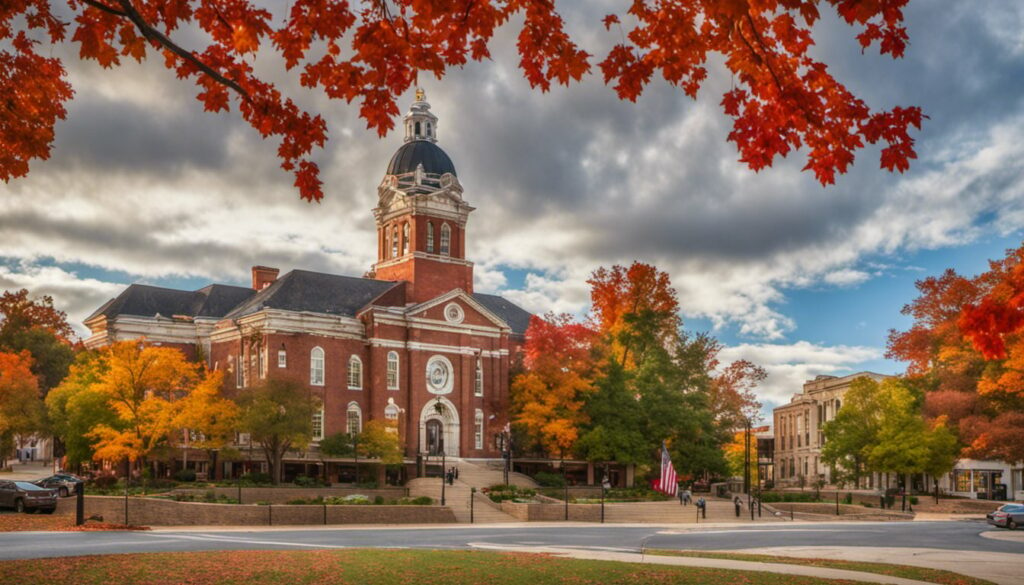Table Of Content
- Excitedly Exploring Historical Sites and Famous Landmarks in Arkansas
- Arkansas History and Its Landmarks
- Historic Sites in Little Rock
- National Historic Landmarks in Arkansas
- Arkansas State Parks and Trails
- Historical Sites Related to World War II
- Archaeological Sites in Arkansas
- Cultural and Unique Landmarks in Arkansas
- Frequently Asked Questions
Excitedly Exploring Historical Sites and Famous Landmarks in Arkansas



Are you fascinated by history and love exploring famous landmarks? Arkansas is a state full of rich history and unique cultural landmarks that are worth exploring. From archaeological sites to national and Confederate cemeteries, Arkansas has a lot to offer for history buffs and travelers alike.
If you are planning a trip to Arkansas, you won’t want to miss the state’s many historical sites and famous landmarks. Little Rock, the capital city of Arkansas, is home to many historic sites that are worth visiting, including the Arkansas State Capitol Building and the Little Rock Central High School National Historic Site. In addition to these sites, Arkansas is also home to 17 National Historic Landmarks, including the Daisy Bates House and the Rohwer Relocation Center, which offer a glimpse into the state’s important role in American history.
Whether you are interested in exploring Arkansas’s history, hiking its state parks and trails, or discovering unique cultural landmarks, there is something for everyone in this fascinating state. In this article, we will explore some of the most popular historical sites and famous landmarks in Arkansas, and provide you with all the information you need to plan your next adventure.
Key Takeaways
- Arkansas is home to a variety of historical sites and famous landmarks that are worth exploring.
- Little Rock is home to many historic sites, including the Arkansas State Capitol Building and the Little Rock Central High School National Historic Site.
- Arkansas is also home to 17 National Historic Landmarks, offering a glimpse into the state’s important role in American history.
Arkansas History and Its Landmarks


Arkansas has a rich and diverse history that has left its mark on the state in the form of numerous historical sites and famous landmarks. From the Civil War to the Louisiana Purchase, the Trail of Tears to desegregation and the Civil Rights Movement, Arkansas has played a significant role in shaping the history of the United States.
Arkansas in the Civil War


During the Civil War, Arkansas was a key battleground. The state was a member of the Confederacy, and many battles were fought on Arkansas soil. The Confederate State Capitol Building in Little Rock is a must-see landmark for anyone interested in the Civil War. The building served as the seat of government for the Confederacy in Arkansas and is now a museum.
Louisiana Purchase and Its Impact


The Louisiana Purchase had a significant impact on Arkansas’s history. In 1803, the United States purchased the Louisiana Territory from France, which included present-day Arkansas. The Louisiana Purchase Survey, conducted in the early 1800s, established the state’s boundaries. The Historic Arkansas Museum in Little Rock is an excellent place to learn more about the state’s early history and the impact of the Louisiana Purchase.
Desegregation and the Civil Rights Movement


Arkansas played a significant role in the desegregation and Civil Rights Movement of the 1950s and 1960s. The Little Rock Central High School National Historic Site is an important landmark in the state’s Civil Rights history. In 1957, nine African American students attempted to integrate the school, and their efforts were met with violent opposition. The site is now a museum and serves as a reminder of the struggle for Civil Rights in Arkansas.
Trail of Tears and Early European Settlement


The Trail of Tears is a tragic chapter in American history, and Arkansas played a significant role in the forced relocation of Native Americans. The Trail of Tears National Historic Trail passes through Arkansas, and visitors can learn more about this dark period in the state’s history at the Trail of Tears State Park. Hernando de Soto is another important figure in Arkansas’s early history. He was the first European explorer to visit Arkansas in 1541 and is believed to have traveled through several areas of the state.
American Revolution and Its Influence on Arkansas


Although Arkansas was not yet a state during the American Revolution, the war had a significant impact on the region. The Arkansas Post National Memorial is a landmark that commemorates the first European settlement in Arkansas and its role in the American Revolution. The site was a strategic location during the war and played a crucial role in the fight for independence.
Arkansas’s heritage is rich and diverse, and its historical sites and landmarks are a testament to the state’s fascinating history. Whether you’re interested in the Civil War, the Trail of Tears, or the American Revolution, Arkansas has something to offer everyone.
Historic Sites in Little Rock


If you’re a history buff, Little Rock should be on your list of must-visit places. The city is home to several historic sites and landmarks that offer a glimpse into the area’s past. Here are a few of the most notable sites to check out:
Little Rock Central High School


Little Rock Central High School is a National Historic Site that played a significant role in the Civil Rights Movement. In 1957, nine African American students, known as the Little Rock Nine, attempted to enroll in the previously all-white school. Their efforts were met with resistance from Governor Orval Faubus, who sent in the Arkansas National Guard to prevent them from entering. The situation escalated to the point where President Eisenhower had to intervene and send federal troops to escort the students to class. Today, visitors can tour the school and learn about this pivotal moment in American history.
Arkansas State Capitol


The Arkansas State Capitol is an impressive building that has been in use since 1912. It houses the offices of the Governor and the Arkansas General Assembly. Visitors can take a guided tour of the building to learn about its history and see some of its most notable features, such as the bronze doors and the rotunda. The Capitol also has a gift shop where you can pick up souvenirs and books about Arkansas history.
Old State House Museum


The Old State House Museum is another must-visit site for history buffs. The building was constructed in 1836 and served as the state capitol until 1911. Today, it’s a museum that showcases Arkansas history from statehood to the present day. Visitors can explore exhibits on everything from the Civil War to the state’s musical heritage. The museum also has a gift shop and a research library for those who want to delve deeper into Arkansas history.
Whether you’re interested in the Civil Rights Movement, politics, or just want to learn more about Little Rock’s past, these historic sites are sure to impress. Take a step back in time and experience the rich history of Little Rock, Arkansas.
National Historic Landmarks in Arkansas


Arkansas is home to several National Historic Landmarks that are rich in history and culture. Here are a few of the most notable ones that you should visit:
Bathhouse Row and Hot Springs


Bathhouse Row is a historic district located in Hot Springs National Park. It features eight bathhouses that were built between 1892 and 1923. The bathhouses were designed to provide therapeutic baths to visitors and were a popular destination for the wealthy during the early 1900s. Today, the bathhouses have been restored and are open for tours. The National Park Service offers guided tours that provide an in-depth look at the history and architecture of the bathhouses.
Fort Smith National Historic Site


Fort Smith National Historic Site is located in Fort Smith, Arkansas. The site was originally established in 1817 as a military post to protect the western frontier. It later became a federal court and prison and was the site of several famous trials, including the trial of Judge Isaac Parker, known as the “Hanging Judge.” Today, the site is open to the public and features several historic buildings, including the courthouse and jail.
Daisy Bates House and Centennial Baptist Church


The Daisy Bates House and Centennial Baptist Church are located in Little Rock, Arkansas. The Daisy Bates House was the home of civil rights activist Daisy Bates and her husband, who played a key role in the integration of Little Rock Central High School in 1957. The house is now a National Historic Landmark and is open for tours. The Centennial Baptist Church, located across the street from the Daisy Bates House, was a meeting place for civil rights leaders during the 1950s and 1960s. The church is also a National Historic Landmark and is open for tours.
These National Historic Landmarks are just a few of the many historic sites in Arkansas that are worth visiting. Whether you’re interested in the state’s rich history or just looking for a fun and educational day trip, these landmarks are sure to impress. So grab your camera and your sense of adventure and start exploring!
Arkansas State Parks and Trails

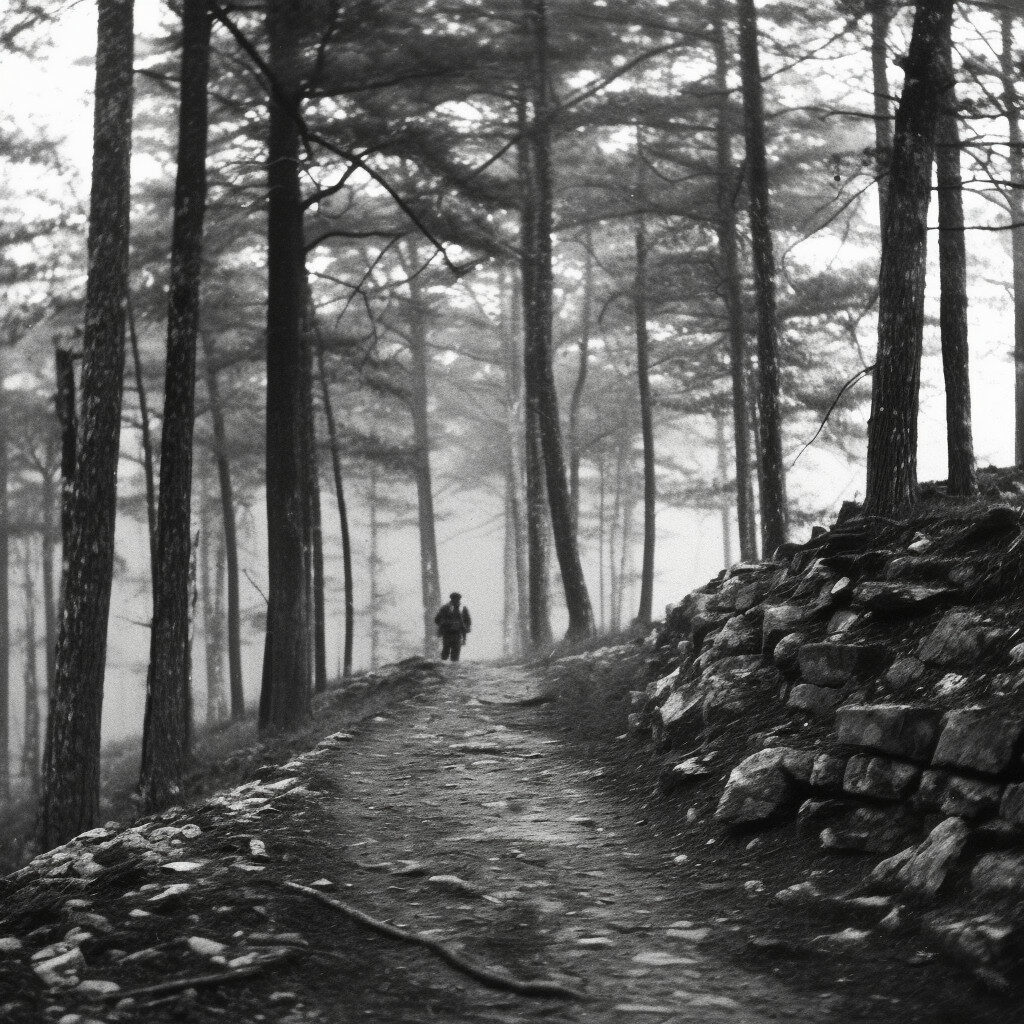
If you’re looking for an exciting outdoor adventure, Arkansas State Parks and Trails are the perfect destination. With over 50 state parks and numerous trails, you’ll find a wide variety of activities to choose from.
Hiking Trails and Mountains


Arkansas is home to some of the most beautiful hiking trails and mountains in the country. The Ozarks and Ouachita Mountains offer breathtaking views and challenging hikes for all skill levels. The Buffalo National River also has several hiking trails that take you through stunning landscapes and unique rock formations.
Lakes and the Arkansas River


Arkansas is known for its beautiful lakes and the Arkansas River. You can enjoy swimming, boating, fishing, and other water activities at popular spots like Lake Ouachita, Lake Catherine, and Lake Hamilton. The Arkansas River is also a great place for fishing and boating, with several marinas and boat ramps available.
Crater of Diamonds State Park


Crater of Diamonds State Park is a unique attraction in Arkansas where you can search for diamonds and other gemstones. This park is home to the only diamond mine in the world that is open to the public. You can rent tools and equipment and dig for diamonds in the park’s 37.5-acre diamond search area. Who knows, you might just find a valuable diamond!
In addition to these attractions, Arkansas State Parks and Trails also offer picnic areas, camping sites, playgrounds, and other amenities for visitors. So, pack your bags, grab your hiking boots, and get ready for an exciting adventure in Arkansas!
Historical Sites Related to World War II


If you’re excited about exploring historical sites related to World War II, Arkansas has some fascinating places to visit. Two of the most notable are the Rohwer Relocation Center Memorial Cemetery and the Arkansas Inland Maritime Museum.
Rohwer Relocation Center Memorial Cemetery


The Rohwer Relocation Center Memorial Cemetery is a somber reminder of a dark chapter in American history. During World War II, thousands of Japanese Americans were forcibly removed from their homes and placed in internment camps, including the Rohwer Relocation Center in Desha County, Arkansas. The cemetery is the final resting place for over 200 Japanese Americans who died at the Rohwer camp.
Visitors to the cemetery can pay their respects to those who suffered and died during this shameful period of American history. The cemetery is a powerful reminder of the importance of never forgetting the mistakes of the past.
Arkansas Inland Maritime Museum


The Arkansas Inland Maritime Museum is a must-see for history buffs interested in World War II. The museum is home to the USS Razorback, a submarine that served in World War II, the Korean War, and the Vietnam War. Visitors can tour the submarine and learn about its fascinating history.
In addition to the USS Razorback, the museum has exhibits on other aspects of Arkansas’s military history, including the role of the state’s soldiers in World War II. The museum is a great place to learn about the bravery and sacrifice of those who served in the armed forces during this tumultuous period in history.
Arkansas has a rich history related to World War II, and these two sites are just a small sample of what the state has to offer. Whether you’re interested in the experiences of Japanese Americans during the war or the military history of the state, there are plenty of fascinating places to explore.
Archaeological Sites in Arkansas


If you’re a history buff, you’ll love exploring the archaeological sites in Arkansas. These sites offer a unique glimpse into the lives of the people who lived in the area long before Europeans arrived. Here are a few of the must-see archaeological sites in Arkansas:
Arkansas Post National Memorial


Located in Monroe County, Arkansas Post National Memorial is one of the most important historical sites in Arkansas. This site was the first European settlement in the lower Mississippi River Valley and served as the capital of the Arkansas Territory from 1819 to 1821. Today, visitors can explore the remains of the settlement, including the foundations of the original fort and the site of the first territorial capital building.
Parkin Archeological State Park


Parkin Archeological State Park is located in Lee County and is home to the Parkin Indian Mound, one of the most important archaeological sites in the state. This site was once home to a Native American village known as Casqui and was occupied from around 1400 to 1700 AD. Visitors can explore the remains of the village, including the mound, which is believed to have been used for religious ceremonies.
Toltec Mounds Archaeological State Park


Located in the town of Scott in Pulaski County, Toltec Mounds Archaeological State Park is home to one of the most significant pre-Columbian archaeological sites in the United States. The site features a series of mounds that were built by the Plum Bayou culture between 650 and 1050 AD. Visitors can explore the mounds and learn about the culture that built them.
Other notable archaeological sites in Arkansas include the Monroe Site, the Lee Creek Site, and the Eaker Site. Each of these sites offers a unique glimpse into the history of the state and is well worth a visit if you’re a history buff.
Cultural and Unique Landmarks in Arkansas


If you’re looking for cultural and unique landmarks in Arkansas, you’re in luck! The state has a rich history and diverse culture that is reflected in its various landmarks. From historic districts to fascinating natural formations, there’s something for everyone.
Cultural Landmarks


Arkansas has a long and storied history, and there are plenty of cultural landmarks that reflect this. For example, the state is home to several Native American properties, including the Parkin Archeological State Park and the Toltec Mounds Archeological State Park. These sites offer a glimpse into the lives of the Native Americans who once inhabited the state.
In addition to Native American sites, Arkansas is also home to several historic districts. These districts, such as the Quapaw Quarter in Little Rock and the Bathhouse Row in Hot Springs, offer a look into the state’s architectural history.
Unique Bridges and Points of Interest


Arkansas is also home to some unique bridges and points of interest. For example, the Big Dam Bridge in Little Rock is the longest pedestrian bridge in North America, and it offers stunning views of the Arkansas River.
Another unique point of interest is the Blanchard Springs Caverns, which features stunning flowstones and other rock formations. Visitors can take a guided tour of the caverns and learn about the geology and history of the area.
Eureka Springs


Finally, no discussion of cultural and unique landmarks in Arkansas would be complete without mentioning Eureka Springs. This charming town is home to several historic properties, including the Crescent Hotel and the Basin Park Hotel. In addition to its historic properties, Eureka Springs is also known for its art galleries, boutiques, and restaurants.
In conclusion, Arkansas has a lot to offer when it comes to cultural and unique landmarks. Whether you’re interested in history, architecture, or natural formations, there’s something for everyone. So, get out there and explore all that this great state has to offer!
Frequently Asked Questions
What are 3 famous landmarks in Arkansas?
If you’re looking for famous landmarks in Arkansas, you can’t miss the Little Rock Central High School National Historic Site, the Hot Springs National Park, and the Crystal Bridges Museum of American Art. These landmarks are not only popular among tourists but also hold significant historical and cultural value.
What are some major landmarks in Arkansas?
Arkansas is home to several major landmarks, including the Arkansas State Capitol, the William J. Clinton Presidential Library, and the Old State House Museum. These landmarks offer visitors a glimpse into the state’s rich history and culture.
What are two historical landmarks in Arkansas?
Two of the most significant historical landmarks in Arkansas are the Arkansas Post National Memorial and the Fort Smith National Historic Site. Both these sites played a vital role in the state’s history and offer visitors a chance to learn more about the state’s past.
What is the most historical place in Arkansas?
The most historical place in Arkansas is arguably Little Rock Central High School. The school played a pivotal role in the Civil Rights Movement and is now a National Historic Site. Visitors can take a guided tour and learn more about the events that took place there.
What are some Civil War sites to visit in Arkansas?
Arkansas was a significant battleground during the Civil War, and there are several sites you can visit to learn more about this period in history. Some of the most popular sites include the Pea Ridge National Military Park, the Prairie Grove Battlefield State Park, and the Fort Smith National Historic Site.
What are some famous waterways to visit in Arkansas?
Arkansas is home to several famous waterways, including the Buffalo National River, the White River, and the Ouachita River. These waterways offer visitors a chance to enjoy outdoor activities such as fishing, kayaking, and canoeing while taking in the state’s natural beauty.


